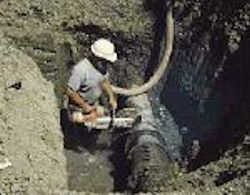Administrative/Work Practice Controls
The aim of administrative/work practice controls is to support and work together with elimination, substitution, engineering controls, and warnings to prevent injuries and illnesses.

Administrative/Work Practice Controls focus on training, scheduling, workloads, policies, procedures, and rules that support higher-level controls by mandating compliance with safe work practices.
However, administrative/work practice controls are only as effective as the safety management system (SMS) that develops, implements, and enforces them. It's best to eliminate or minimize the hazards themselves, so that managers are not solely dependent on workforce compliance to maintain a safe workplace. It's a well-known principle that:
To make sure administrative/work practice controls are effective in the long term, they must be designed based on solid hazard analysis and sustained by a supportive safety culture. They must then be accompanied by adequate resources, training, supervision, and appropriate consequences.
Knowledge Check Choose the best answer for the question.
5-7. A safety management system that relies solely on worker compliance is inherently _____.
You forgot to answer the question!
